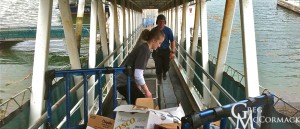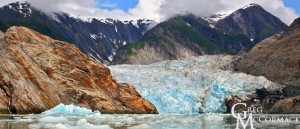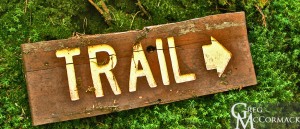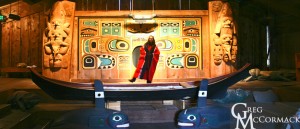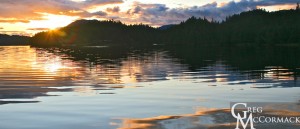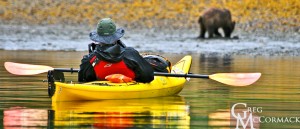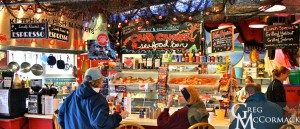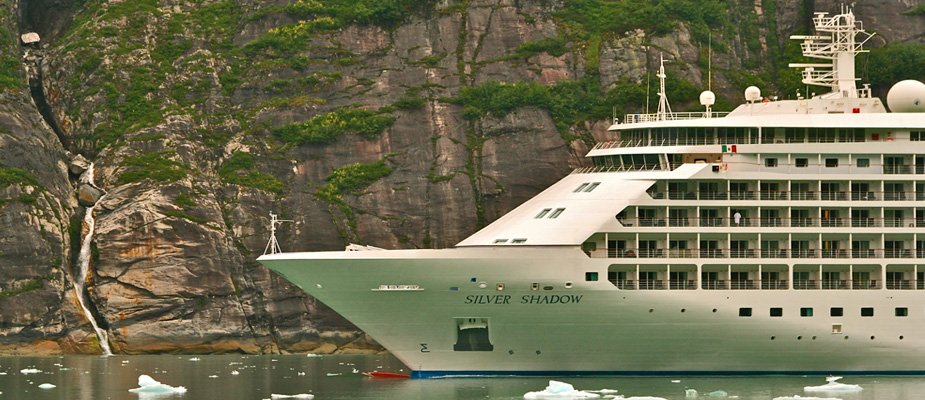Search results
where is gmack now? innersea discoveries expedition week 10
It has been an exciting week on the InnerSea Discoveries Expedition Click Links Below to read daily updates from Week 10 of the Trip:
July 2 – July 9, 2011
Saturday | July 2
TURNOVER DAY = SWABBING THE DECKS
Sunday | July 3
GLACIER CALVING, SEALS & WHALES
Monday | July 4
HAPPY 4TH OF JULY, EVERYBODY!
Tuesday | July 5
MOOSE PELLETS
Wednesday | July 6
CHIEF SHAKES LODGE
SNORKELING AND BANJO PLAYING
Friday | July 8
CLAM-EATING BEAR
Saturday | July 9
“WE NEED THE GREGgle APP!”
Saturday | July 2
September 14, 2011 by admin
Filed under InnerSea Discoveries
“If there is magic on this planet, it is contained in water.” –Loren Eisely
The M/V Wilderness Discoverer lifts anchor and motors north through Gastineau Channel and docks beneath the rising peaks of Mount Roberts and Mount Juneau. All (departing passenger) luggage is taken off of the vessel and carried up the dock ramp to the waiting buses.
A fond farewell takes place between crew and guests as the latter disembark to hug and shake hands with their favorite crew members on the dock. Great memories and sad goodbyes!
The excitement for the morning is when I crashed a fully-loaded, heavy rolling cart on the ramp leading down to the pier. Luckily none of the eggs in the 13-dozen box broke.
Note to self: Do not use a cart that lacks hand brakes when the tide is low. All of the carts but one has a hand brake. Kristen helps me re-load and we get back to transporting stores from truck to ship.
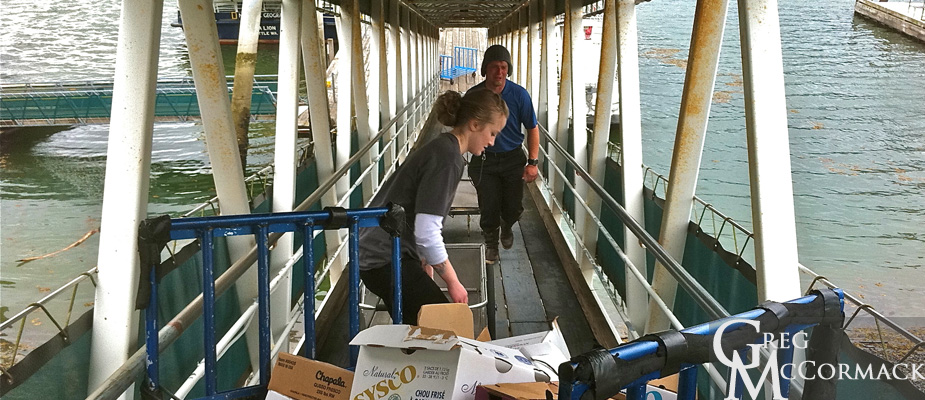
All available hands on the ships crew prepare for a new group of passengers that will board the vessel at 16:30 hours. All decks are swabbed, port holes washed, sheets changed, cabins and heads cleaned, dirty laundry and garbage hauled off ship, and galley stores stowed.
After our welcome aboard orientation meetings with the deck, engineering, hotel and expedition leads, the M/V Wilderness Discoverer pulls away from the Juneau dock and heads south in Gastineau Channel. We spot some Humpback Whales feeding just outside of the Taku Inlet and enjoy the sunset on the outside decks.
Our destination for tomorrow will be the one of three spectacular fiords in the Tracy Arm—Fords Terror Wilderness, about 46 miles south of Juneau. The area encompasses close to 700,000 acres of rugged Coast Range mountains bordering Holkham Bay, the spot where we will be anchoring tonight.
The three dramatic fiords are Endicott Arm, Fords Terror and Tracy Arm, all of which trend west-to-east through the Coast Mountain Range. The three tidewater glaciers drop down from the Stikine Icefield and regularly calve ice bergs into the ocean.
Sunday | June 19
August 3, 2011 by admin
Filed under InnerSea Discoveries
Tracy Arm and the Sawyer Glaciers
Terns and Eagles On Ice!
Today is the first of several days visiting up to 7 different glaciers in the Coastal Mountains of Southeast Alaska. The seven glaciers our guests have choices to see emanating from the Stikine Icefield: Sawyer, South Sawyer, Dawes, Baird, Patterson LeConte and Shakes (the latter two are in ice-choked waters and require a 3rd party shore excursion operator that uses special boats or float planes).
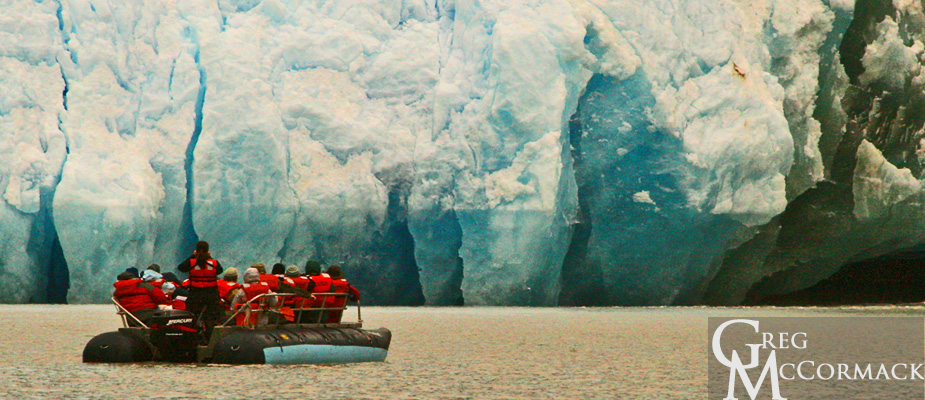
The Stikine Icefield is approximately 100 miles long from the Whiting River in the north to the Stikine River in the south and about 30 miles wide from tidewater up and over the crest of the Coast Range past the international boundary into British Colombia, Canada.
We lift anchor on the outside of Holkham Bay and make our way 21 nautical miles up Tracy Arm to the Sawyer glaciers, one of the most extraordinary fjords in the world. I spend the morning on the forward deck where guests congregate on two levels to take in the outstanding scenery.
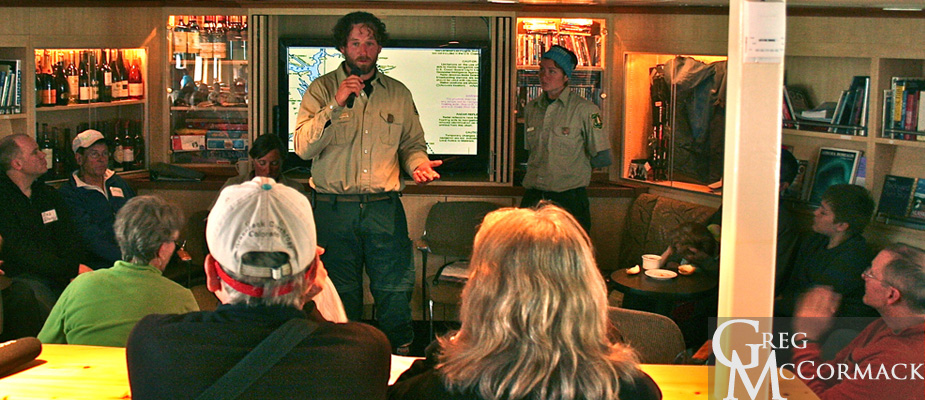
Guests are taken aback by the sudden appearance of a large Silversea cruise ship named the M/S Silver Shadow. We could count only 10 people out on decks (port side). Perhaps they were all on the starboard side taking-in the massive granitic walls. It’s amazing how small and how few decks we have in comparison.
Further up the fjord, it’s exciting to see the long-distance champion of all the 9,200 species of birds on the planet: the Arctic Tern. It flies up to Alaska to breed from as far south as the Antarctic continent.
I figure it has to be flying 12,000 miles up here to breed and another 12,000 to return for feeding in the Austral Summer. With all the extra flying they do searching for food, particularly during the northern summer to find food and feed the young, I’m guessing they do close to 30,000 miles a year, which equates to 2500 miles a month or over 80 miles a day.
Arctic Terns join the Mew and Glaucous-winged gulls plying the waters for hand-sized shrimp and schooling fish at the face of the glacier. When tons of ice fall during calving events, all sorts of prey is churned up to the surface, arriving discombobulated or dead for easy pickings.
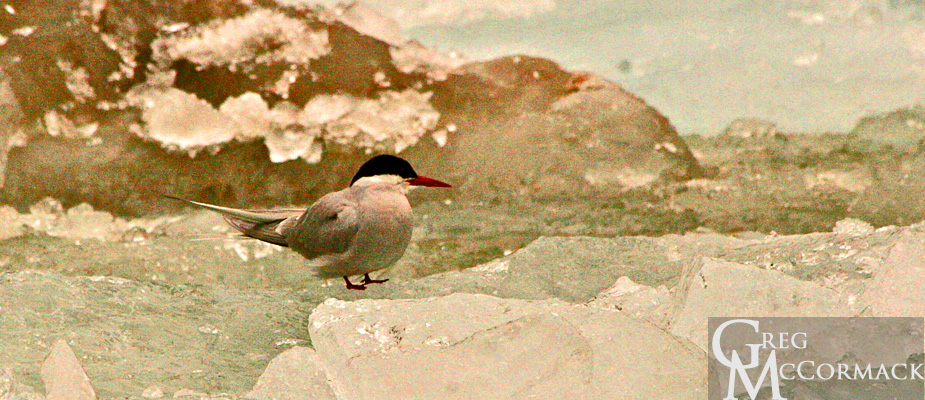
We offer small boat tours that prove to be productive for watching calving events with thunderous sounds and significant swells generated. On our way back to ship, we see and welcome two Tongass National Forest Rangers aboard who arrive via kayak to our stern.
The highlight of the early afternoon is a significant number of Bald Eagles perched on several ice-bergs.
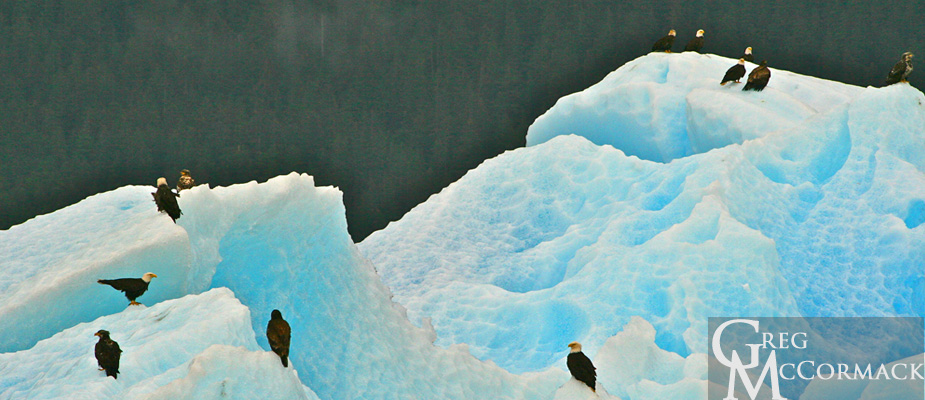
I’ve rarely seen more than one on a berg. To see a dozen or more on the blue ice was thrilling and it was only a minute or two before everyone was alerted to get outside on the decks to see the spectacle at Holkam Bay. The waters are very productive for birds and marine life due to the joining of the Tracy Arm and Endicott Arm fjords. Here the underwater terminal moraine separates the Holkam Bay from the deeper Stephens Passage. My guess is that the eagles were waiting for seals to give birth to pups. The afterbirth provides a needed nutritious supplement. The other possibility is that there is an abundance of schooling fish such as the eulachon or capelin and/or Pollock right now.
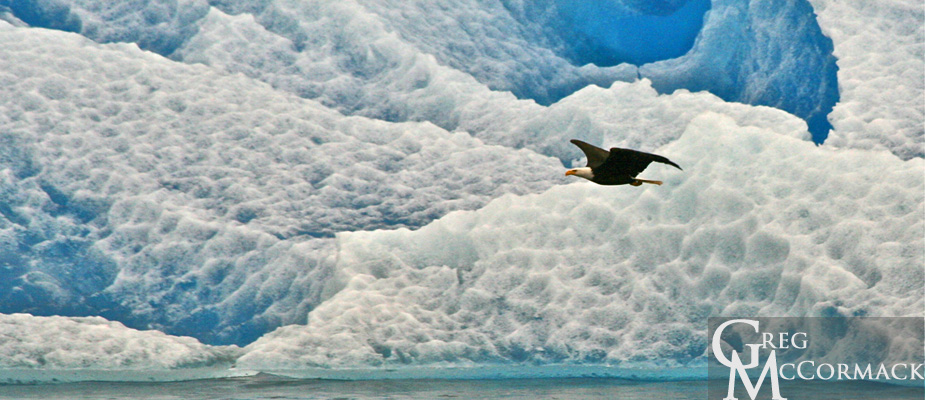
We motor south through Stephens Passage to Frederick Sound. I give a marine radio call to the good folks of the Alaska Whale Foundation who are stationed at the Five Fingers Lighthouse. Captain Andy of the Research Vessel Evolution accepts our invitation to come aboard for an evening lecture about his research on the threatened Humpback Whale. He comes aboard with 4 college student research assistants, who join me for dinner before moving up to the top deck. Andy regales us with a fascinating talk on whale ecology. He entertains us with his wit and charm and answers at least a doze questions on his research interests.


